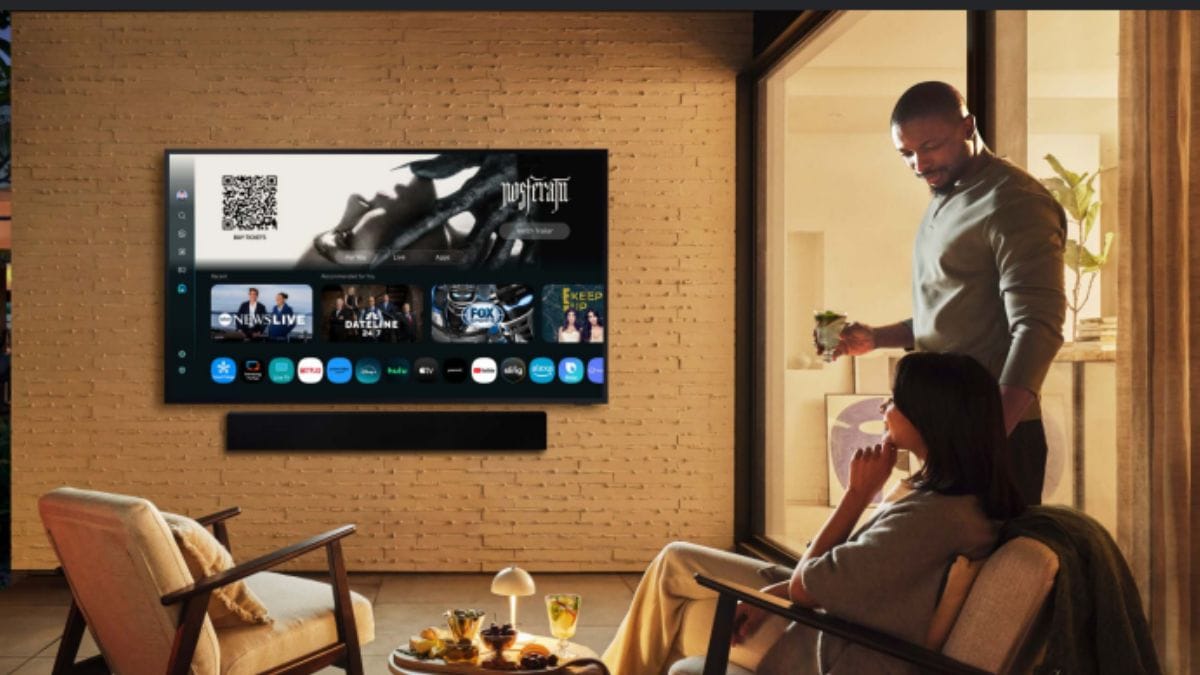Samsung: With Smart Set Data, TV Can Compete With Digital At Bottom Of Marketing Funnel
‘This is the moment when TV truly becomes a conversion medium for advertisers.’

Samsung Ads thinks TV commercials need to tackle the lower part of the marketing funnel to regain their importance to media buyers and advertisers.
For decades, TV was the mass-medum of choice for marketers looking to build brands that consumers know, respect, desire and ultimately purchase. That’s the top of the marketing funnel, the end furthest from consumers.
As an old-school analog medium, it was difficult to connect the viewer watching a TV show with the consumer buying a product that appeared in a commercial. The best evidence was that when companies cut back on TV advertising, their sales magically fell. The lesson for marketers: Don’t make the mistake of cutting your TV budget.
When digital media came onto the scene, it made extravagant claims about how views and clicks translated into purchase behavior. This was even more true when it came to making online purchases. Determining how much credit a website deserved when a consumer clicked on a link to buy a product that was embedded in the consideration set largely because of years of brand-building TV advertising was a conundrum that hurt the perceived value of TV.
Determining attribution and quantifying return on advertising sales (ROAS) became the new battlefield, and at first, TV was largely unarmed. But as TV has become increasing digital and more viewers are streaming, there more hard data about viewing and how it connects to consumer behavior,
Along with the streaming services–nearly all of which are now ad supported–device makers like Roku and smart TV makers like Vizio, LG and Samsung have launched their own free ad-supported streaming channels and have been selling ads on their home pages, where many views stop before deciding what they’re going to watch.
This digital transformation allows television advertising to target the lower end of the marketing funnel, the end where consumers actually purchase products.
Samsung has just released its new Smart TV behavior Tracking Study, found that consumers have a new relationship with TV, and that gives the medium a new lower-funnel appeal to advertisers.
“This is the moment when TV truly becomes a conversion medium for advertisers. Consumers are no longer passive viewers; they expect their TVs to be as interactive, responsive, and actionable as every other digital platform in their lives,” the report says. “These changing expectations call for a revolution in TV advertising to seize new opportunities for engagement and commerce.”
For its study, Samsung tracked 1,000 smart TV users and found that more than 80% of smart TV owners use their TV for more than just watching TV shows and movies. Among younger viewers–25-34 year olds–that number grows to more than 95%.
Samsung asserts that smart TV operating systems, like Samsung’s Tizen are offering apps that power this new relationship. What’s popular on smart TVs? Apps that deliver educational and fitness-related video content that is used by 20% of younger smart TV owners. More than 25% of those younger smart TV owners use their TV to manage other connected devices in their homes. They also do social media and gaming on the big screen.
Consumers may be using their TVs for other things, but when it comes to digital video, most of it is consumed on connected TVs, as opposed to mobile devices or laptops.
These connected devices generate data give marketers a tool for both long-term brand building and short term revenue via interactivity and shoppable ads.
“Thanks to CTV's internet connectivity and interactive capabilities, the purchase loop can now be closed and measured immediately-whether the resulting purchase happens on the TV, on a consumer's connected device, or in-store,” the report says.
TV is still playing catch-up to other digital media, Samsung says. It is still rare for TV ads to feature a “buy” button, although shoppable ads are becoming more common and standardized. Already two-thirds of smart TV owners are comfortble purchasin through the TV, according to the Samsung Ads survey.
Similarly, remote-control based interactive ads and ads with QR codes that viewers can scan with their ever-present mobile phones are becoming more available.
Being digital also means that TV can get out from under antiquated forms of passive measurement and join social, mobile, display and search with metrics that reflect business outcomes and results.
“TV has evolved from a communal living room device to a personal device; characterized by a wide range of interactivity; which redefines TV not only as the ultimate viewing device, but one that delivers utility for the consumer, and business outcomes for the advertiser,” the report says.
Those outcomes are looking pretty strong. According Samsung Ads proprietary campaign data from seven different advertisres from 2024 and 2025, TV campaigns improve conversion rates by up to 6 times and result in 84x lower cost per acuqision, compared to benchmarks.
"QR codes and remote purchasing are moving TV from passive viewing to actionable engagement. But real transformation won’t come from shoppable ads alone. To make CTV a performance channel, marketers need cross-device attribution, always-on incrementality testing, and outcome-focused metrics. CTV’s potential is limited when treated purely as a brand play, and the channel shouldn’t be exempt from performance standards," said Alex Yip, director of product strategy at AppsFlyer.
"We've seen promise from shoppable formats, but what’s needed is scalable infrastructure for consistent targeting, measurement, and optimization. That means integrating CTV into broader attribution systems, applying household-level insights, and focusing on metrics that tie directly to results. TV can drive outcomes across the funnel, but only if we start measuring it like the performance channel it’s capable of becoming," Yip said.
Essentially TV is at last playing by new rules in the same arena as the digital giants, which have been dominating ad revenue and ad revenue growth.
Let the games begin.
# # #
Comcast said its Xfinity unit is launching StreamStore, a destination where pay-TV and broadband customers can find, buy and manage streaming apps, channels and networks,
Later this year, StreamStore will offer more money saving StreamSaver bundles in addition to a la carte apps. Xfinity already offers bundle of Apple TV+, Netflix standard with ads and Peacock for $15 a month.
# # #
Spectrum Business customers will be able to access NFL Sunday Ticket and Peacock Sports Pass subscriptions via the EverPass App on the Xumo Stream Box as part of a new agreement among Spectrum, Xumo and EverPass Media.
"At Xumo, we're focused on delivering a flexible, premium streaming experience that adapts to the unique needs of every operator," said Michael Gatzke, Senior Vice President, Affiliate Development, Xumo. "With the EverPass app now available on the Xumo Stream Box, Spectrum can deliver its Business TV customers an unmatched live sports experience with the simplicity and reliability they expect.”
# # #
Warner Bros. Discovery said it is expanding its relationship with VideoAmp, using its data to measure linear, digital and cross-platform campaigns during negotiations with media buyers during the 2025 upfronts and beyond. Financial terms of the deal were not disclosed.
The U.S. Joint Industry Committee (JIC) on measurement recently certified iSpot, Comscore and VideoAmp for use as currency in media buying transactions. The companies are providing the industry with an alternative to Nielsen, which declined to take part in the JIC’s audit process. Despite complaints from the VAB, Nielsen's new Big Data+Panel ratings are likely to be used as currency in the majority of upfront deals.
"At WBD, we are committed to offering our clients more accurate, effective tools to reach their audiences and measure success," said David Porter, head of ad sales research, data, and insights at WBD. "VideoAmp helps us measure what actually works - across every screen, every audience, and every dollar spent - which will be more important as the industry gears up for the next TV buying season.”

